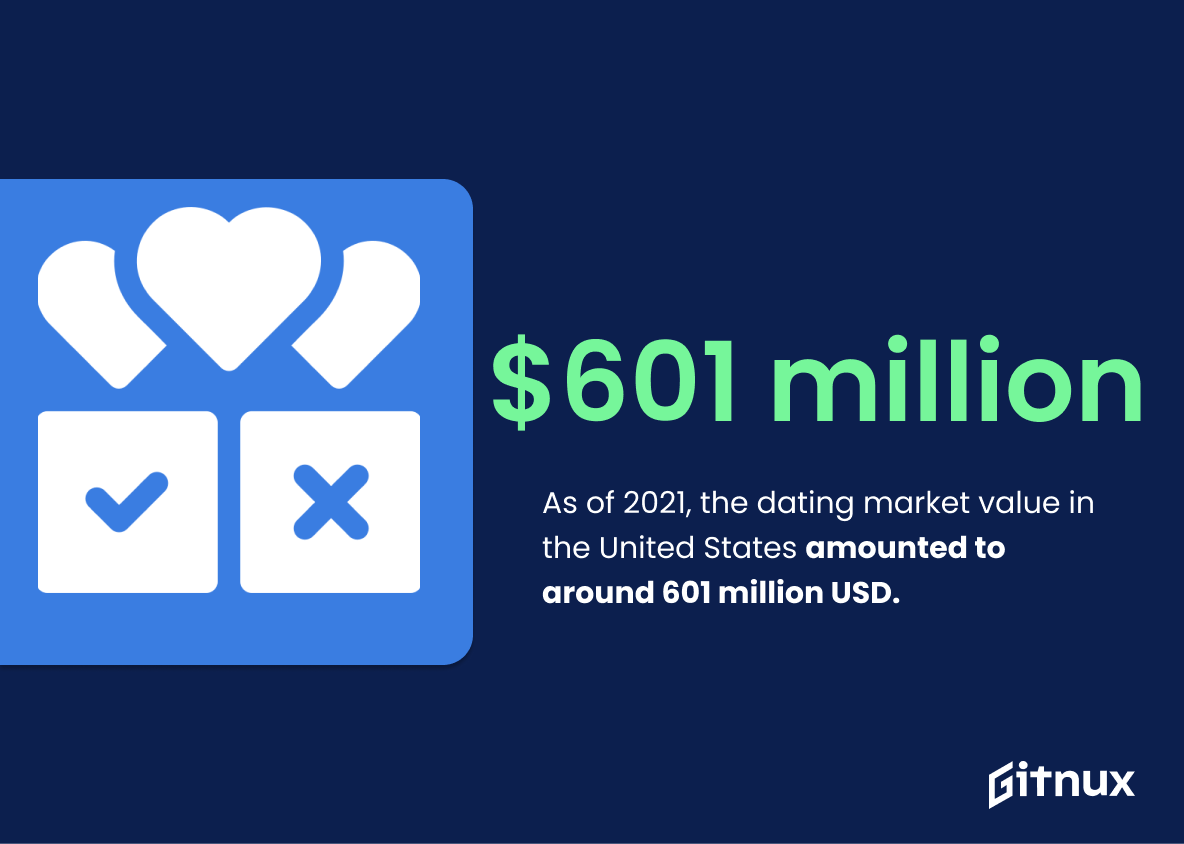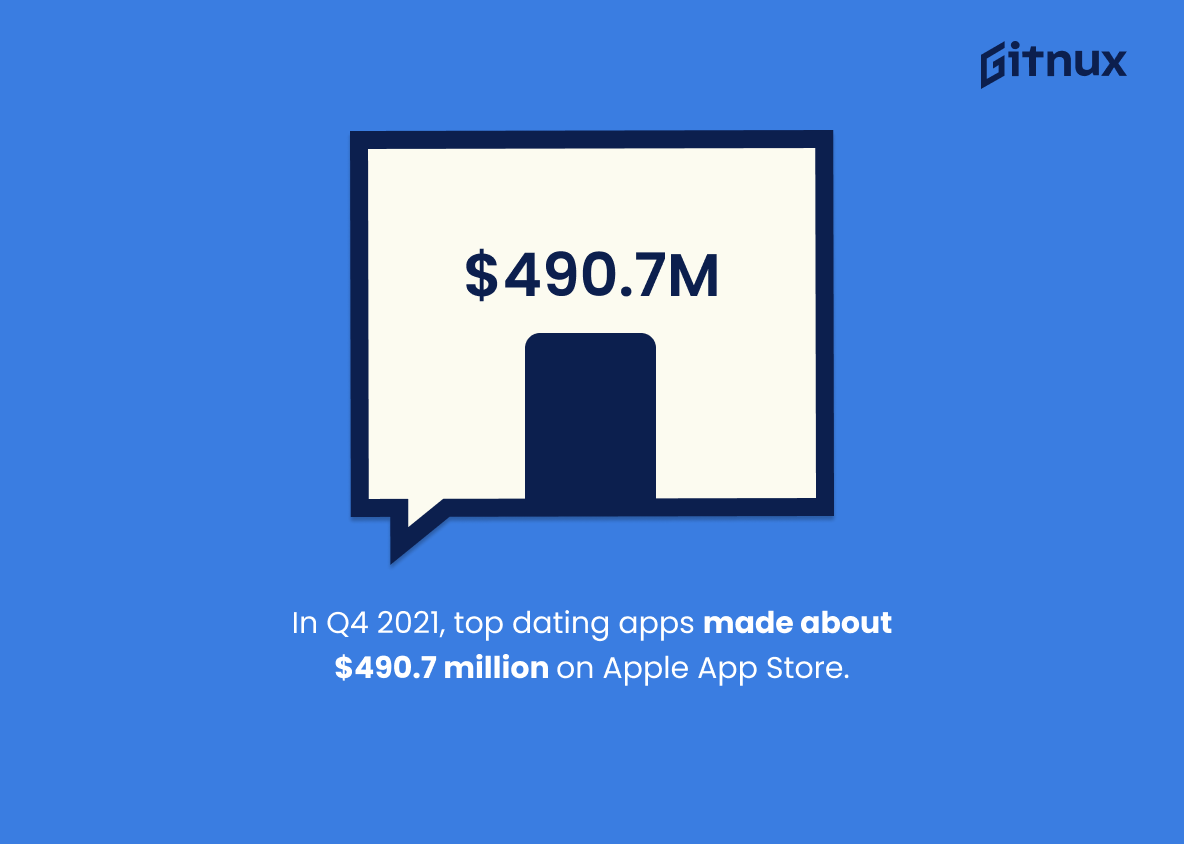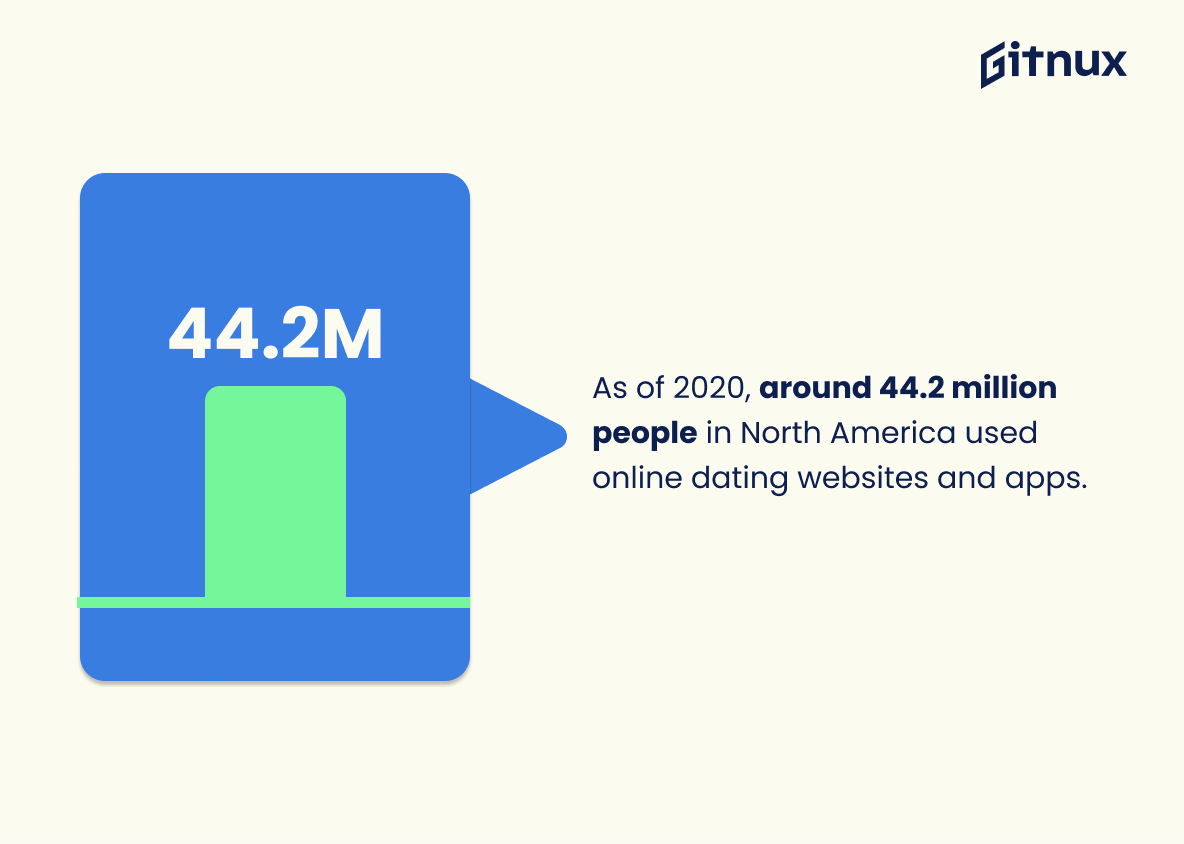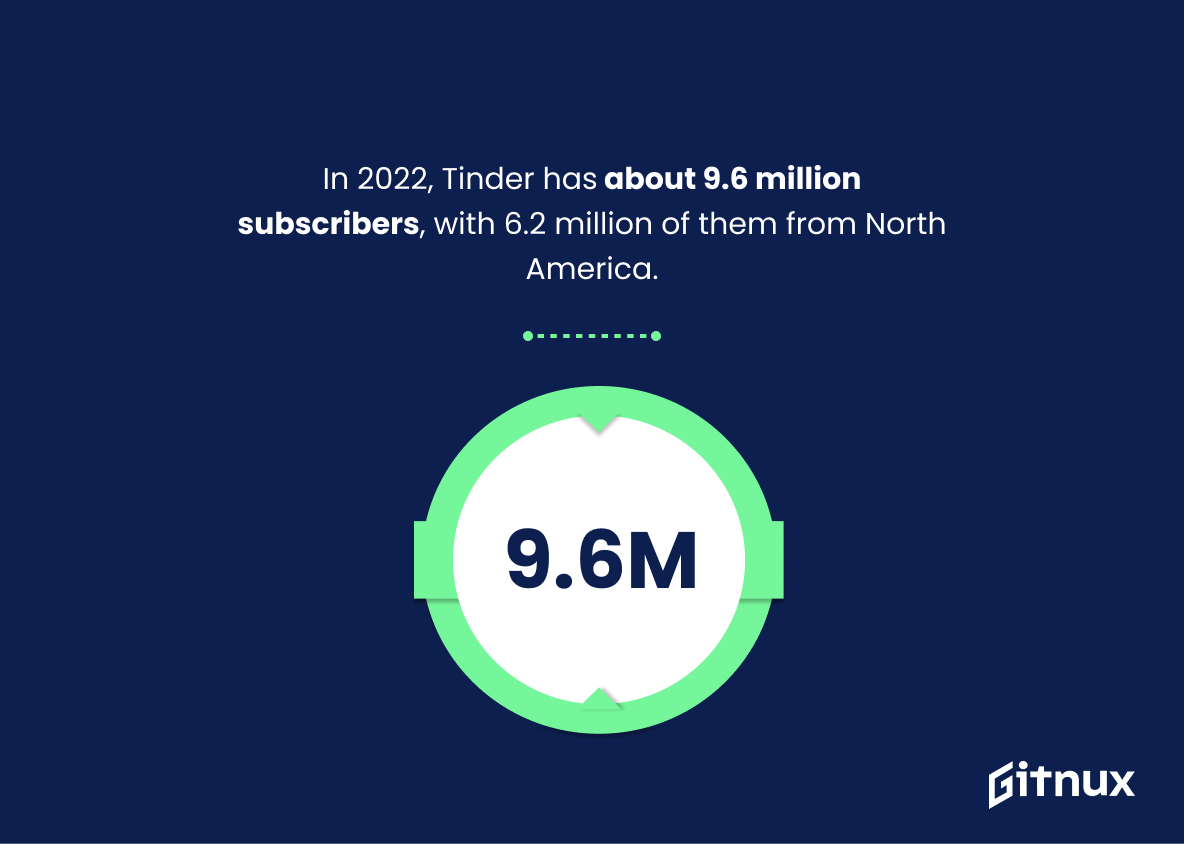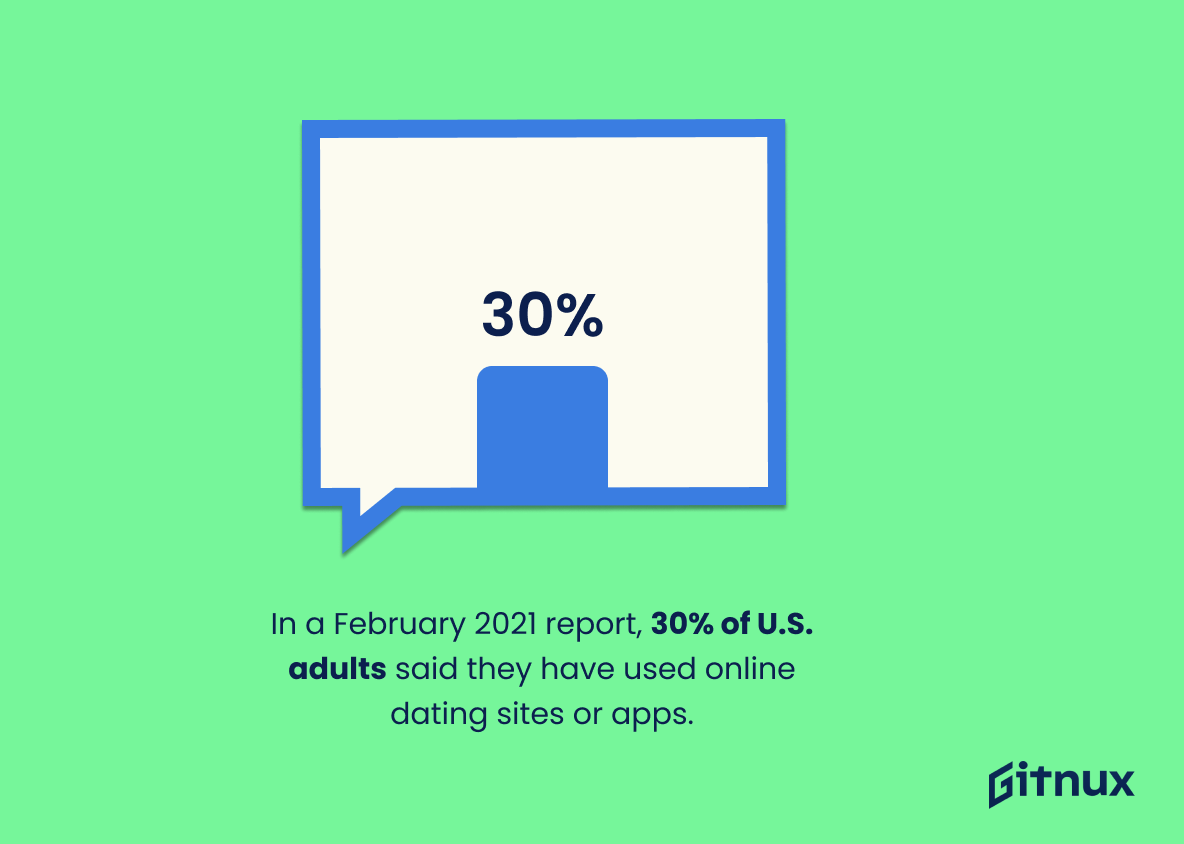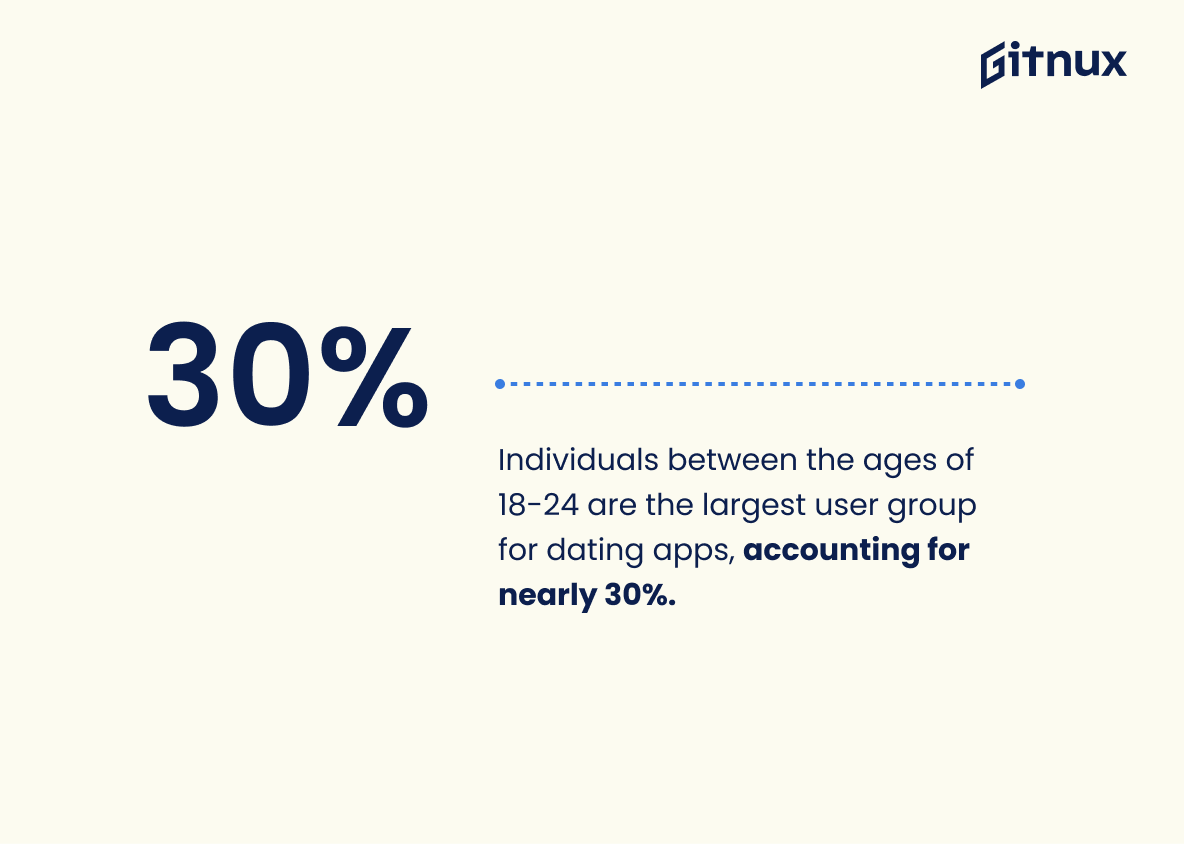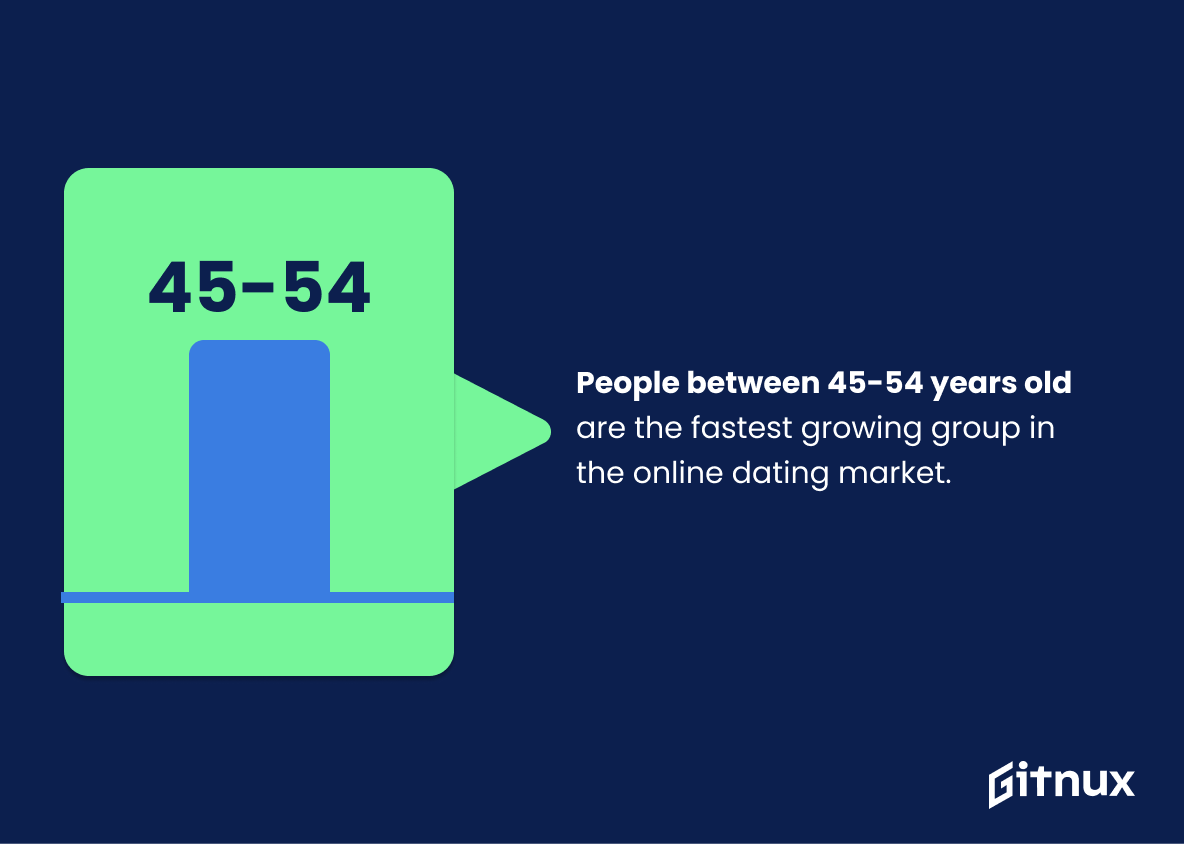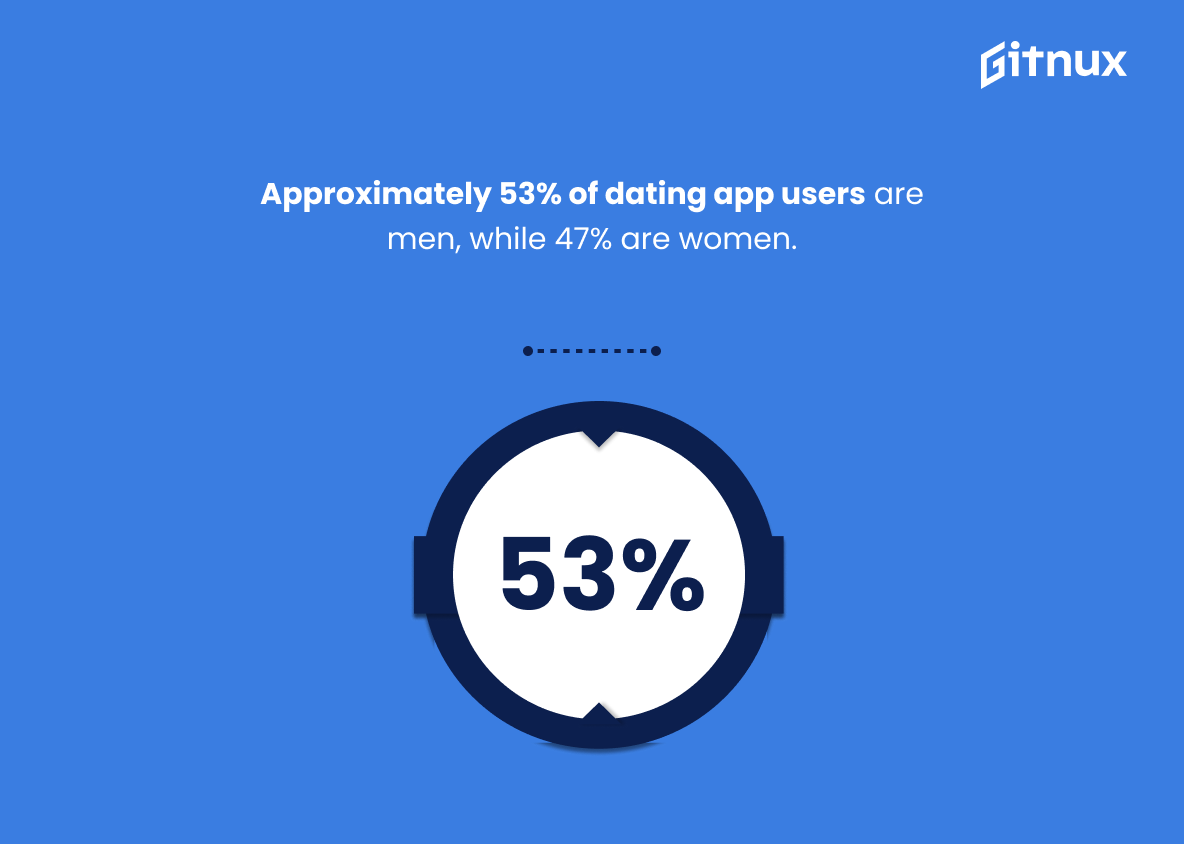In the rapidly evolving landscape of digital technology, nothing has revolutionized the realm of romantic interactions quite like dating apps. Welcome to our in-depth exploration into the heart of the dating app industry, brimming with fascinating statistics and intriguing trends. Together, we will unravel the nuances of this dynamic industry, revealing figures that not only quantify its current impact, but also predict future trends.
Whether you’re a curious user, an aspiring developer, or a keen marketer, we present you with a treasure-trove of information, promising a unique insight into the digitized world of modern love. Let’s swipe right and delve into the match-making world of dating app industry statistics.
The Latest Dating App Industry Statistics Unveiled
As of 2021, the dating market value in the United States amounted to around 601 million USD.
Highlighting the statistic that, in 2021, the United States alone had a dating market value of approximately 601 million USD puts a pointed emphasis on the expansive growth and profitability of the dating app industry. In the grand scheme of our discussion on Dating App Industry Statistics, this information serves as a significant benchmark showing the vast monetary potential behind these virtual matchmaking platforms.
It not only demonstrates the scale at which people are investing their money in this sector, but also hints at the substantial user base and frequency of use. This vibrant data point is a testament to the dating app industry’s economic vitality, paving the way for future innovations, investments, and competition within this sector.
As of the Q4 2021, leading dating apps generated a gross revenue of approximately 490.7 million U.S. dollars on the Apple App Store.
Delving into the intriguing world of dating app industry statistics, it’s simply astounding to note the revenue figures. The impressive gross revenue, amounting to approximately 490.7 million U.S. dollars garnered by leading dating apps from the Apple App Store in Q4 2021, speaks volumes about the fiesty monetary potential of this industry. This number helps to set the stage regarding the extensive reach and influence of dating applications, highlighting them as more than just platforms for connecting people and fostering romance.
The dollar value is a testimony to the entities they have turned into, reshaping digital business models while significantly contributing to the market economy. A statistic like this illuminates the extent to which users are financially invested in these platforms, underlining the industry’s commercial success and its potential for consistent growth in the coming years.
There are almost 8,000 dating apps worldwide.
Highlighting that there are almost 8,000 dating apps worldwide sketches a lively panorama of a booming industry. It underscores the explosive growth and popularity of digital dating, reflecting its transformation from a social taboo to a daily norm, almost as ubiquitous as coffee shops.
Furthermore, this figure exposes the fierce competition within the sector, raising questions about the app features that account for their survival, growth or potential downfall in such a crowded market. It evokes attention-seeking graphics, intuitive interface, user engagement tactics or advanced matching algorithms. To the curious reader, it’s as if this hefty number whispers: “Dive deeper, there’s more to this industry than meets the eye.” So, let’s take that plunge.
As of 2020, around 44.2 million people in North America used online dating websites and apps.
In the exciting universe of the blog post on Dating App Industry Statistics, the intriguing fact that around 44.2 million individuals in North America used online dating applications and websites as of 2020 provides a rich tapestry of details. It lends both depth and color to the canvas of our discussion, painting a picture of immense digital adoption.
Furthermore, it underscores the trend’s exponential growth and the impressive audience base that digital dating platforms enjoy. Unfurling this number is akin to lifting the curtain on the colossal potential this industry holds in the age of digital connections and virtual romance – it’s not a wave of the future, it’s the tidal wave of the present, altering the landscape of human relationships.
In 2022, Tinder has about 9.6 million subscribers, with 6.2 million of them from North America.
The statement that Tinder boasts around 9.6 million subscribers as of 2022, the lion’s share of which hails from North America with 6.2 million users, tells a compelling story about the thriving landscape of the dating app industry. In unpacking these numbers, we unearth that Tinder’s substantial user base underscores its stature as a behemoth in the online dating world which could be a benchmark for competitors in this space.
Delving deeper into these statistics, it is evident that the dating app industry is not just a fleeting digital phenomenon but a powerful social tool that has integrated itself into the fabric of contemporary life, particularly in North America. It suggests that the online mode of initiating relationships is becoming increasingly normalized, if not preferred, which is likely to impact future trends and business models in the digital dating world. These figures, therefore, shed light on current market dynamics and hint towards potential customer behavior patterns.
Moreover, the sizable number of subscribers emphasizes the profitability potential for businesses in this industry, while the geographical trend indicates market penetration and cultural attitudes towards online dating in different regions. Thus, these statistics offer valuable insights for marketers, app developers, and investors to analyze market supremacy, regional popularity, growth trajectory, and user behavior, all crucial components when dissecting the dating app industry.
In 2020, the global online dating market was valued at $5.3 billion.
This compelling figure illustrates the immense financial value attached to the online dating industry. At $5.3 billion in 2020, it’s clear that romance in the digital age is not just about finding the perfect match but also represents an incredibly lucrative market. Within the context of a blog post about Dating App Industry Statistics, this presents a vivid testament to the economic power of digital love, and the huge market potential it holds for both newcomers and established players.
It also paints a picture of the industry’s capacity to generate significant revenue, underscoring the commercial viability of investing in dating app ventures. This statistic, therefore, serves as not just a symbol of the size of the field, but also as a signal to entrepreneurs, developers and investors alike of an industry thriving and primed for innovation and growth.
In a February 2021 report, 30% of U.S. adults said they have used online dating sites or apps.
Amidst the numerical maze that characterizes the world of dating app industry statistics, the revelation that in February 2021, 30% of U.S. adults used online dating sites or apps, holds a significant key to understanding the blossoming landscape of digital courtship. This figure, with its straightforward simplicity, carries an unmissable message – a seismic shift is occurring in the way modern adults are finding partners. No longer restricted to traditional settings, people are embracing the extraordinary convenience of digital platforms to seek, find and connect with potential partners, casting the spotlight on the critical role of online dating sites and apps in reshaping societal dynamics.
Such a trend is indicative of the explosive growth opportunities for businesses within this industry, while simultaneously painting a compelling picture of sociological change in romance and relationships. This 30% widens the lens through which we view this modern romantic ecosystem, underlining the testimony of the sheer scale and potential it carries for technologists, data scientists, marketers, anthropologists and, of course, singletons everywhere.
Individuals between the ages of 18-24 are the largest user group for dating apps, accounting for nearly 30%.
The statistic highlighting that individuals between the ages of 18-24 compose nearly 30% of dating app users acts as a compelling centerpiece in the broader narrative of dating app industry statistics. It underscores the profound role of this tech-savvy, social media-native generation within the dating app landscape. Their substantial participation completely shapes the direction of app development, marketing strategies, and even the evolution of dating norms itself.
Not only does this insight act as a thermometer gauging the current temperature of the application market, but it also serves as a compass signaling where the industry may head next given the tastes, preferences, and behaviors of this age group.
People between 45-54 years old are the fastest growing group in the online dating market.
Observing the surge of 45-54 year-olds in the online dating scene transforms our understanding of the Dating App industry’s dynamics. No longer confined to the youthful sphere dominated by millennials, this trend signals a maturing market resonating with an older demographic group. Their growth burst paints a promising landscape for dating app providers, high-fiving them to diversify their strategies to embrace this potential goldmine of users, perhaps fine-tuning features and interfaces to appeal to a more mature audience.
Their varied life experiences may translate into higher spending power and demand for meaningful connections, shaking up the dating app monetization models and user engagement patterns. So remember, amid teenagers and young adults chasing trendy dating interfaces, the silver-haired are no laggards behind the virtual romance spree.
Approximately 53% of dating app users are men, while 47% are women.
An examination of this intriguing datum reveals an insightful narrative about the gender dynamics within the dating app industry – a story where men represent the slight majority. Indeed, with roughly 53% men, these digital arenas are seeing a more harmonious balance of genders than ever before.
This reinforces the perception of dating apps as a societal norm and a legitimate platform for finding potential partners, debunking any myth of skewed gender representation. Additionally, the proportioned mix allows for wider engagement, fostering greater interaction opportunities and enhancing user experience, thus influencing the dating app design, functionality, and marketing strategies.
A study from 2020 showed that around 52% of online daters state that dating apps and services had a somewhat positive effect on dating relationships.
The undeniable significance of this 2020 study’s statistic gleams like a leading star in the cosmos of dating app industry. It vouches for the healthy impact of dating apps and services on relationships, with the nod coming from over half the online daters. This relatively positive perception is a beacon for industry players, illuminating where they stand and where they need to head.
This statistic strategically intersects with user experience, digital technology, and the evolution of human relationships, upholding the impressions and impacts online dating platforms are carving out in modern society. It serves not only as a mirror reflecting the current scenario but also as a runway hinting at the possible altitude the Dating App Industry could scale in the future.
In 2020, 66% of online daters had gone on a date with someone they met through a dating site or app.
Adopting a bird’s eye view on this statistic reveals its significance in illuminating the vast impact of dating apps on forging real-life connections. Signifying that two-thirds of online daters in 2020 materialized their virtual interactions into an actual date, it unearths the potentiality of dating platforms as successful social connectors.
Hence, in the bustling cosmos of the dating app industry, this statistic stands tall as a testament to their efficiency, reassuring potential investors, stakeholders, and the users about their effectiveness. This data also propels innovators to further hone their matchmaking algorithms, providing a more fulfilling dating experience while contributing to industry growth.
In 2019, the revenue from dating services from China reached about $999 million.
Highlighting the fascinating statistic of 2019’s Chinese revenue from dating services, which approached a stunning $999 million, provides concrete proof of the scale and profitability of the dating app industry. It showcases the industry’s global reach and high potential, especially in digitally advanced and populous nations like China.
As it paints a back-story of growth, the detail adds significant weight to the understanding of the industry, underpins ongoing trends, and aids in projecting the industry trajectory. Thus, it’s a crucial point in any comprehensive study or blog post about Dating App Industry Statistics.
By 2025, the dating services market size is expected to reach $11.9 Billion.
This compelling projection of the dating services market size reaching $11.9 Billion by 2025 serves as a torchlight illuminating the path of opportunistic growth in the dating app industry. It paints a vision of a more connected future where digital romance is not just a casual convenience, but a socio-economic impact player. These robust digits indicate potential for ambitious app developers, invigorates competition and pressurize innovation for better user experience.
Between the lines of this enticing figure, one can read the increased acceptance and normalization of digital dating among global consumers. Undeniably, this statistic is the heartbeat of the dating app industry, pumping life, investment and anticipation for what the future holds.
Conclusion
Navigating the ever-evolving landscape of the dating app industry can be much like the process of dating itself – complex, unpredictable, and constantly changing. As our data-heavy exploration shows, however, understanding these changes and the statistics behind them is key to gaining a competitive edge. It’s clear that with the continuous expansion of the digital world, the dating app industry is not just surviving, but thriving.
Keeping an eye on the trends we have highlighted, such as shifting user demographics and growth potential in emerging markets, could garner greater success for existing platforms and new entrants. While there is no guaranteed route to creating the next breakthrough dating app, utilizing solid data and insightful statistics can certainly help in forging a potential path to success.
References
0. – https://www.www.statista.com
1. – https://www.www.marketsandmarkets.com
2. – https://www.www.grandviewresearch.com
3. – https://www.www.gwi.com
4. – https://www.www.pewresearch.org
5. – https://www.www.businessofapps.com
